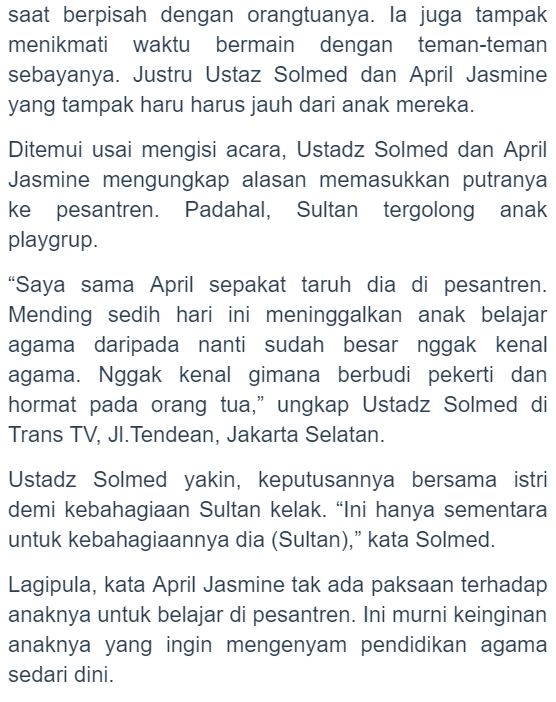Keharuan Ustadz Solmed Saat Titipkan Putranya Yang Berusia 5 Tahun ke Pesantren, Ini Kata Ustadz Solmed dan Istri



While the SUV may be falling out of favor as gas prices continue to climb, the Chevy Tahoe is taking matters into its own hands (or wheels?). Recently, the vehicle crossed the finish line of a 55-mile race with an empty driver seat. Of course, that Tahoe - nicknamed "Boss" - had been robotized by the Tartan Racing team from Carnegie Mellon University.
Boss made history when it was named the winner of the Defense Advanced Research Projects Agency (DARPA) Urban Challenge. Competing against eleven other robotic vehicles on the nearly sixty-mile course, Boss used a combination of Light Detection and Ranging (LIDAR), radar, vision and Global Positions System (GPS) technology to "see" the road, and navigate itself to the finish line. Boss can recognize road geometry, perceive traffic and obstacles, and use algorithms and software to figure out where it's safe to drive. During the DARPA challenge, the robotic car faced stop signs, intersections and busy traffic areas that it had to figure out how to get around - while still complying with California (where the event was held) traffic laws. The vehicle also had to change lanes, merge with moving cars and pull into a parking lot.
Of the eleven cars that competed, six crossed the finish line. While "Junior", a vehicle created by a team from Stanford, was the first finisher with a time of just over four hours, Boss finished only minutes later - but started twenty minutes behind Junior. The vehicles were not allowed to go any faster than 15 miles per hour and they had a six-hour time limit. While the initial criteria was based on which vehicle did the best job of navigating the course - not who finished quickest - since the vehicles performed so well, the final judgment came down to who had the fastest time. For Boss's victory, Carnegie Mellon received as $2-million cash award from DARPA. Second-place finisher Stanford received $1 million, and the third-place team from Virginia Tech received $500,000.
Boss was developed by Tartan Racing, a team made up of Carnegie Mellon faculty, staff and students from the School of Computer Science's Robotics Institute, and the university's College of Engineering. Also part of the team were engineers from General Motors (GM), Caterpillar, Continental and Intel. The team believes one of its major advantages in the DARPA Challenge was a software system it developed called TROCS, which produced graphic animations of Boss's sensor and data inputs as it drove. This software allowed the Tartan Racing team to understand what Boss saw as it drove and how it reacted to it. Through this system, troublesome behaviors could be easily identified and adjusted.
GM donated the Chevy Tahoe to Tartan Racing for use in the project. In addition to its sponsorship of Carnegie Mellon's Tartan Racing team, GM is working with the university on autonomous driving technologies through its collaborative research laboratory. According to Alan Taub, GM executive director of research and development, collaboration with universities and supplier partners is vital to the development of this technology. The company hopes eventually the technology can be used to help eliminate the most common cause of car crashes - driver error.
Shad Connelly,
Executive Editor -
Invention & Technology News (http://news.inventhelp.com)
Article Source: https://EzineArticles.com/expert/Shad_Connelly/185014
Article Source: http://EzineArticles.com/1189352

